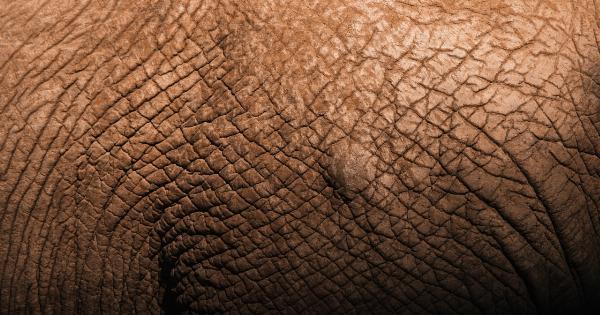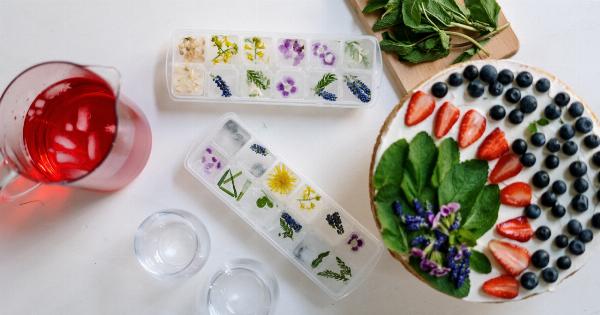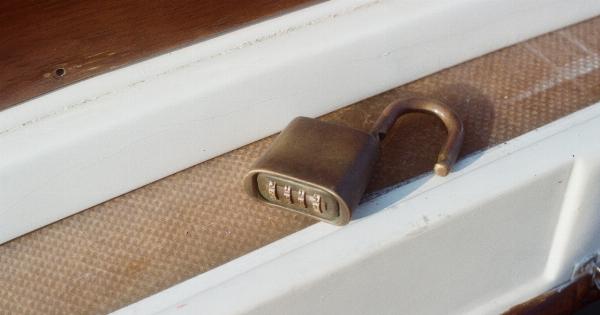Going on holiday is a fantastic way to relax and unwind, but spending too much time in the sun can leave your skin damaged and in need of some TLC. Sun damage can cause premature aging, fine lines, wrinkles, hyperpigmentation, and even skin cancer.
Luckily, there are several simple and effective tips you can follow to remove sun damage and restore your skin’s health. Here are 10 easy tips for removing sun damage after your holiday:.
1. Hydrate, Hydrate, Hydrate
One of the most important things you can do to help your skin recover from sun damage is to stay hydrated. Drinking plenty of water helps replenish your skin from the inside out and aids in the healing process.
Aim to drink at least 8 glasses of water per day, and consider adding hydrating foods to your diet, such as watermelon, cucumbers, and oranges.
2. Use a Gentle Cleanser
When removing sun damage, it’s crucial to use a gentle cleanser that won’t further irritate your skin. Look for a cleanser specifically designed for sensitive or damaged skin and avoid harsh ingredients like alcohol or fragrances.
Gently cleanse your face twice a day to remove dirt, oil, and sunscreen, and pat your skin dry with a soft towel.
3. Exfoliate Regularly
Exfoliating your skin regularly helps remove dead skin cells and promotes cell turnover, revealing fresh, healthy skin. Choose a gentle exfoliator with natural ingredients and avoid harsh scrubs that can further damage your skin.
Exfoliate your face and body once or twice a week, but be sure not to overdo it, as excessive exfoliation can lead to irritation.
4. Apply Aloe Vera
Known for its soothing properties, aloe vera is a great remedy for sun-damaged skin. Apply pure aloe vera gel to your skin to reduce inflammation, promote healing, and hydrate your skin.
You can use aloe vera directly from the plant or look for products that contain a high percentage of aloe vera for optimal results.
5. Use a Vitamin C Serum
Vitamin C is a powerful antioxidant that helps repair and protect your skin from sun damage. Applying a vitamin C serum to your face can help lighten hyperpigmentation, brighten your complexion, and stimulate collagen production.
Look for a serum with a high concentration of vitamin C and apply it daily before moisturizing.
6. Moisturize Daily
After spending time in the sun, it’s essential to moisturize your skin daily to replenish lost moisture and prevent dryness.
Choose a lightweight, non-comedogenic moisturizer that suits your skin type, and apply it to your face and body after cleansing. For added hydration, you can also incorporate a hydrating serum or oil into your skincare routine.
7. Wear Sunscreen Every Day
Prevention is key when it comes to sun damage, so make sure to wear sunscreen every day, regardless of the weather. Look for a broad-spectrum sunscreen with an SPF of 30 or higher and apply it generously to all exposed areas of your skin.
Reapply every two hours, especially if you’re spending time outdoors.
8. Try a DIY Face Mask
Creating your own DIY face mask using natural ingredients can help soothe and rejuvenate sun-damaged skin.
Try mixing plain yogurt with honey for a hydrating and calming mask, or combine mashed papaya with lemon juice for a brightening and exfoliating treatment. Apply the mask to your face, leave it on for 15-20 minutes, and rinse with lukewarm water.
9. Incorporate Retinol into Your Skincare Routine
Retinol, a derivative of vitamin A, is known for its anti-aging properties and its ability to improve sun-damaged skin. It helps promote collagen production, reduces the appearance of fine lines and wrinkles, and enhances skin texture.
Start by incorporating a low concentration retinol product into your nighttime skincare routine, and gradually increase the dosage as tolerated.
10. Visit a Dermatologist
If your sun damage is severe or persists despite trying various remedies, it’s advisable to seek professional help.
A dermatologist can evaluate your skin, recommend targeted treatments, and provide personalized advice based on your specific needs. They may suggest procedures such as chemical peels, laser therapy, or prescription medications to help repair and rejuvenate your skin.





























